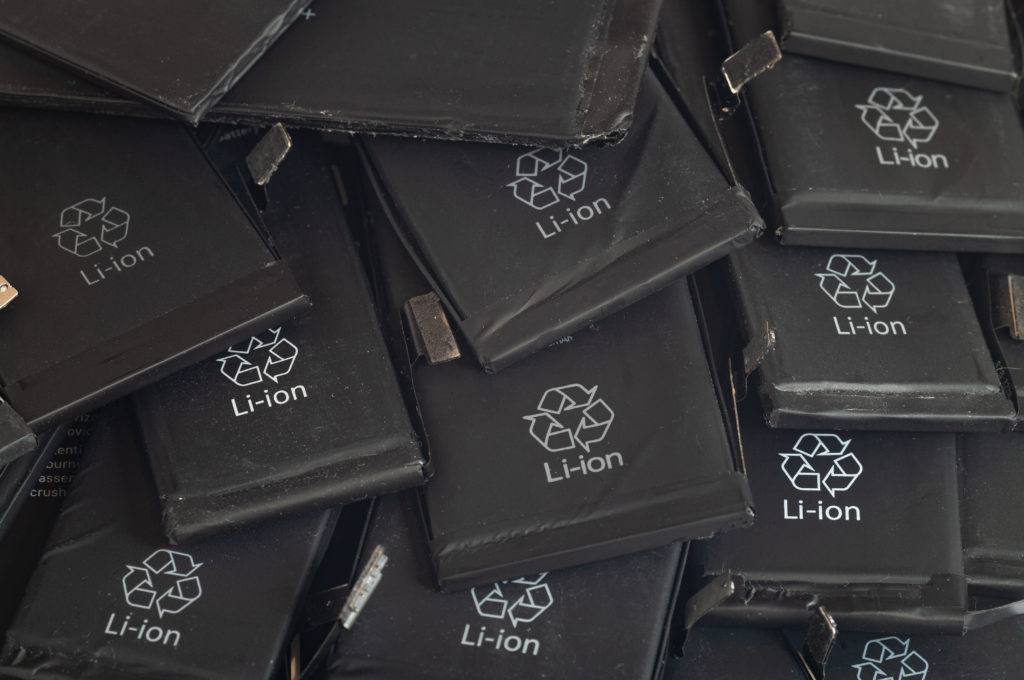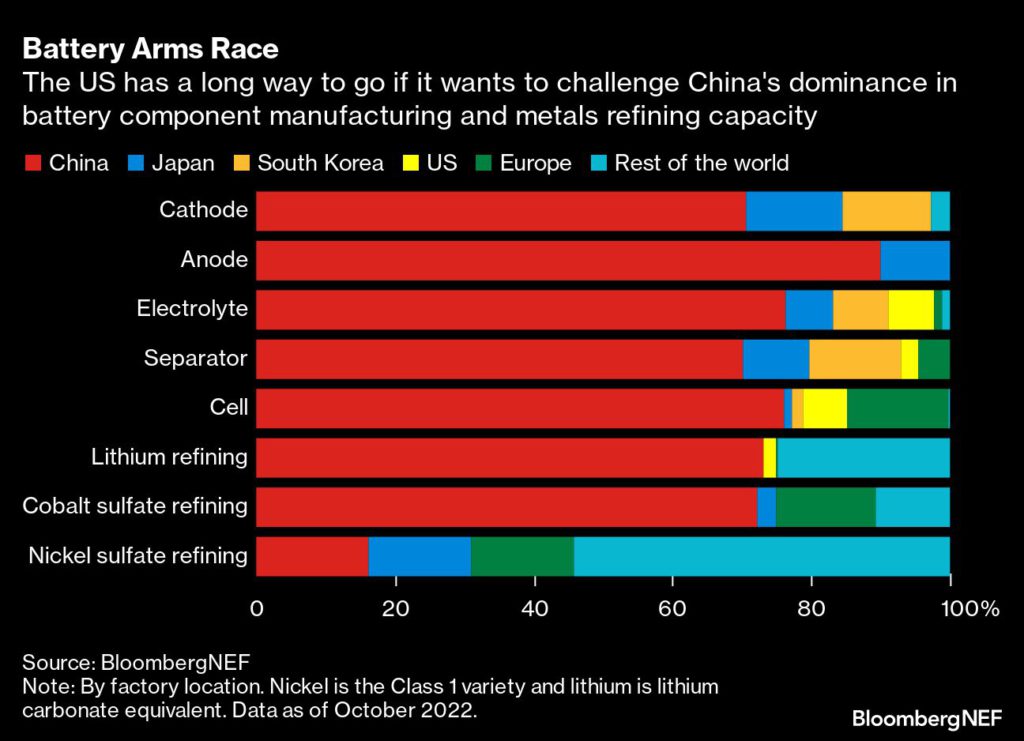
A key supplier to the electric vehicle sector is urging the Biden administration to clarify details of a law aimed at drawing more battery manufacturing investment to the US.
It’s still not clear whether certain sourcing scenarios — such as processing minerals in the US from overseas mines, or from operations controlled by foreign companies — will run foul of the Inflation Reduction Act, according to LG Chem Ltd., one of the world’s biggest chemical companies and a key producer of battery materials.
The legislation signed into law in August aims to boost US production of EVs and curtail China’s dominance of the industry’s supply chains. Its requirements have drawn pushback from politicians and executives in countries including France, Argentina and South Korea. Automakers will be required to secure battery minerals from countries that have free trade agreements with the US to be eligible for $7,500-per-vehicle tax credits for consumers.
LG Chem last month announced plans to invest $3 billion to build a facility in Clarksville, Tennessee, that would be the largest US factory producing cathode material used in lithium-ion battery cells. The supplier also is keeping a close watch on the potential impact of the new law on costs, according to Chief Executive Officer Shin Hak-Cheol.
“We are trying to take a safe route in terms of keeping ourselves enough room, not skating through the edge of the ice,” Shin said in an interview this month in Seoul. “And I’m hoping that the ice will not break while you’re still skating.”
Here’s an edited transcript of the interview with Shin covering the IRA, rising demand and future plans.
How well is LG Chem prepared for the implications of the IRA?
We are giving our commitment to our customers — battery manufacturers and OEMs — that we will be IRA compliant. However, there are some unclear scenarios. If you have all the metal mines owned by a US company, and then you assemble there — that’s clear-cut. There are many scenarios in between, and those scenarios eventually have to be worked out by the US government. We haven’t figured out every detail yet.

Will there be enough capacity in supply chains by 2030 to enable OEMs to produce the volume of electric models that they are promising?
You have to dissect every component to determine what is the supply bottleneck and can it be resolved — by when, by what method? It’s no secret that demand is much larger than supply. You just cannot build factories fast enough. You cannot hire people that fast.
Suppliers have had to deal with higher raw material costs this year. How challenging is the cost picture over the next few years?
The cost element is one of many things we are dealing with. We are trying to produce the best quality, and to have stable quality in mass production — that’s by far the most important focus.
When it comes to prices or metals, we’re not the only company worrying about that. I think in this kind of a tumultuous situation, you need to make it simple and focus on what you can deliver and control as opposed to trying to fundamentally change what you cannot. I think the industry at large has to focus on what they can deliver — to kind of calm down, use data and facts, and do the best they can do. If everybody’s doing that in every value chain, then the whole industry will benefit. If one person is trying to solve all the problems, that creates more problems than solutions.
Will there be a cost premium for supply chains that become completely IRA compliant, or compliant with any similar laws in the EU or elsewhere?
I don’t know until I see the facts. It is true that the US government is offering some incentives in the form of various tax credits, not just the $7,500 subsidy to consumers who are buying EVs, but also a number of provisions related to tax abatement for manufacturing operations in North America. So whether that will offset some of these things, I don’t know. I think there had to be the realization on the part of whoever enacted the law that it’s inevitable that there will be added cost.
Is LG looking beyond cathode materials?
We are looking at all options, all possibilities, though you need an anchor product. We want to be the best cathode supplier in the world — in quality and technology — before we worry about all the other elements. With the joint venture with Toray, we are already parlaying into separators. We already announced during our investor conference that we eventually want to become the world’s best battery-materials supplier — like binders, and carbon nanotubes.
(By Heejin Kim and David Stringer)
Comments